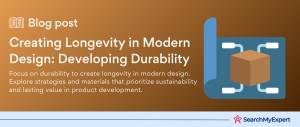Global Trends in Product Design
The Essence of Product Design
Product design is the art and science of creating items we use daily. It’s a blend of aesthetics, functionality, and innovation. Imagine everything around you – your smartphone, coffee mug, or even your car. All these began as a concept in a designer’s mind. Product design is crucial because it not only determines the look and feel of a product but also its functionality and user experience.
The World is Shrinking: Global Influence in Design
In today’s world, the design scene is no longer confined to local boundaries. With the internet and global shipping, a designer in Tokyo can influence a startup in San Francisco, and vice versa. This interconnectedness means that design trends are becoming more global. We see a fusion of cultural aesthetics, materials, and techniques from around the world in modern product design.
The Purpose of Our Journey
In this outline, we’ll embark on a fascinating exploration of the current trends in product design. We’ll see how designers across the globe are pushing the boundaries, how cultural exchanges are shaping new design languages, and what the future might hold for product design.
Human-Centered Design
User Experience Takes Center Stage
At the core of modern product design is the user. It’s all about creating products that not only look good but also feel intuitive and easy to use. This focus on User Experience (UX) means designers are spending more time understanding how people interact with products, what they need, and what challenges they face.
Inclusivity, Accessibility, and Connection
Designers are increasingly acknowledging the diversity of their users. Products are now being crafted with inclusivity and accessibility in mind. Think about voice-activated devices helping those with mobility issues, or software with customizable color schemes for the visually impaired. These are not just products; they’re lifelines for many.
Personalization: The New Norm
In a world where everyone wants to stand out, customizable and personalized products are becoming hugely popular. From custom-engraved smartphones to software interfaces that learn and adapt to your usage patterns, the era of one-size-fits-all is fading away. Now, it’s all about creating a unique experience for each user.
Sustainable Design
The Environmental Awakening
As our planet faces environmental challenges like never before, sustainable design has moved from being a niche concept to a mainstream priority. Designers and consumers alike are becoming more conscious of the impact products have on the environment. It’s not just about creating attractive items anymore; it’s about responsible design.
Eco-Friendly from Start to Finish
Sustainable design involves using recycled materials, ensuring eco-friendly manufacturing processes, and considering the entire lifecycle of the product. From biodegradable packaging to products made from reclaimed wood or recycled plastic, the focus is on reducing waste and minimizing environmental impact.
The Circular Economy: A New Design Philosophy
Circular design is a game-changer. It’s about creating products that can be reused, repaired, or recycled, thereby extending their lifespan. This approach challenges the traditional ‘take-make-dispose’ model and promotes a more sustainable, circular economy. Designers are now crafting products meant to last, not just in terms of durability but also in style and functionality.
Technological Innovation in Product Design
Embracing the Tech Wave
The world of product design is increasingly intersecting with cutting-edge technology. Innovations like Artificial Intelligence (AI), Virtual Reality (VR)/Augmented Reality (AR), and 3D printing are opening new frontiers in how products are designed, manufactured, and experienced.
Smart Products and Digital Experiences
From smart home appliances that can be controlled with a smartphone to wearable devices monitoring your health, technology is making products more interactive and personalized. Designers are not just thinking about the physical form of a product but also its digital capabilities and how it connects to the larger digital ecosystem.
The Double-Edged Sword of Technology
While technology brings exciting possibilities, it also poses challenges and ethical considerations. Issues like data privacy, energy consumption of AI systems, and the environmental impact of electronic waste are becoming increasingly important in the design process.
Economic and Social Impact of Product Design
Design as a Catalyst for Economic and Social Progress
Product design plays a pivotal role in driving economic growth and social change. Well-designed products can create new markets, spur job creation, and even drive entire industries forward. Moreover, design can address pressing social issues, making a tangible difference in people’s lives.
Design for Good: Addressing Social Challenges
We’re seeing an increasing number of products designed to tackle social challenges. From medical devices that are affordable and easy to use in remote areas, to educational tools that enhance learning experiences, designers are using their skills for social good.
Ethics and Responsibility: More Than Just Design
In the world of product design, ethical labor practices and responsible sourcing are becoming non-negotiables. Consumers are more aware and concerned about where and how products are made. Designers and companies are being held accountable for their supply chains and labor conditions, ensuring that the products we use are not only well-designed but also ethically produced.
The Future of Product Design
Emerging Trends and Future Directions
As we look ahead, the landscape of product design is set to evolve in exciting ways. Emerging trends point towards a future where design is not only about aesthetics but also about creating a positive impact on society and the environment.
Designing a Sustainable, Inclusive, and Innovative Future
Sustainability will continue to be a key driver, with designers focusing on eco-friendly materials and processes. Inclusivity will also be paramount, as products are designed to cater to diverse needs and backgrounds. Innovation, particularly through technology, will open new avenues in how we interact with and experience products.
The Role of Design in Shaping Tomorrow
Designers are not just creators of objects; they are shapers of the future. The role of design in addressing challenges like climate change, social inequality, and technological disruption will be more critical than ever. Design thinking will be instrumental in finding solutions to these complex issues.
Conclusion
Understanding global trends is essential for successful product design. As we move forward, the ability to adapt, innovate, and empathize will define the next generation of product designers. The future of product design is bright, diverse, and holds the promise of a better world for all.
Elevate your product’s impact with our Product Designing Services.
Table of Contents
Toggle






